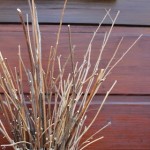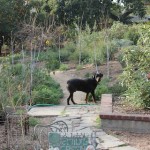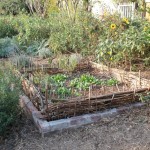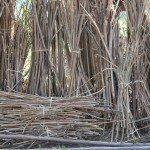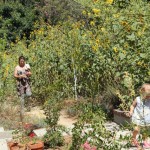Ceanothus blues
Posted on | January 30, 2012 | 8 Comments
Rhapsodies about ceanothus tend to come in blue. Ceanothus flowers aren’t any blue, they’re blue sky blue. No, George Gershwin blue. Deep space should have such a blue. The one-upsmanship is understandable. These plants do for blue what roses do for red and pink, though there’s always a know-it-all in the house willing to pipe up that in the case of the ceanothuses ‘Ray Hartman,’ ‘Dark Star,’ ‘Centennial’ and ‘Yankee Point,’ from bud to seed their blossoms can also seem to start mauve, turn lavender, then blue, then Jimi Hendrix purple. Some ceanothuses in the mountains such as Ceanothus cuneatus or ‘Snow Flurry’ aren’t blue at all, but white. Click here to keep reading
Commenting on the unspeakable
Posted on | January 23, 2012 | 7 Comments
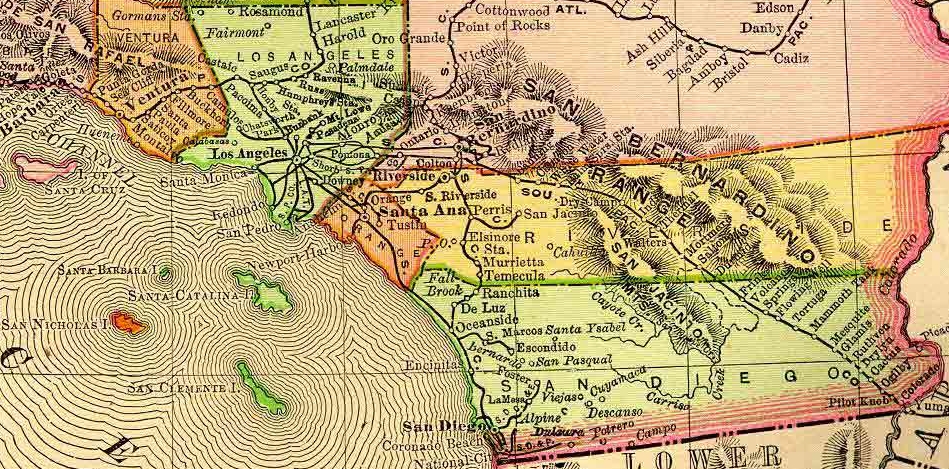 Five years ago, when asked about a plan by Las Vegas to pump groundwater around the Great Basin National Park, Nevadan hydrologists who learned that I was a reporter based in Southern California used to respond, “If you think that’s bad, you should look at Cadiz.”
Five years ago, when asked about a plan by Las Vegas to pump groundwater around the Great Basin National Park, Nevadan hydrologists who learned that I was a reporter based in Southern California used to respond, “If you think that’s bad, you should look at Cadiz.”
Nevadans live to insult Californians, but it was said so many times by so many hydrologists that roughly two-and-a-half years ago, I started looking at this worse-than-Vegas Cadiz.
It wasn’t the Spanish port, but a little-known unincorporated pocket of the Californian Mojave just visible in the upper right hand corner of this lovely old map. Thanks to a water project backed by some of the golden state’s leading politicians, even five years ago Cadiz had another meaning. It was hydrology shorthand for “water grab.”
As I began studying it, incredulous dispatches on Cadiz became an early and running theme in this blog. We all know about the seven stages of grief. In my case, writing about Cadiz involved five stages of revulsion: shock gave way to incredulity, then indignation. Determination to fight gradually descended into jaundice. Since those weathered old hydrologists first insisted that I look in my own back yard for disastrous ideas, I have to concede, they were right. Cadiz is to my eyes as bad or worse than anything that Las Vegas has planned for the Great Basin and the way the pillaging of the Californian Mojave has been attempted is worse.
Since I began posting on the subject, officials of the Cadiz project have complained to organizations that so much as link to this site that I am biased. That’s true. I am convinced beyond a shadow of a doubt that the groundwater underlying the Mojave Desert should not be mined to support new lawns in Orange County, Riverside and Los Angeles. Unlike the comparatively trashed deserts of the Mediterranean region and Africa, the largely intact deserts of the western United States are an international treasure, in spite of Reclamation and nuclear testing. As a reporter seasoned in these baked regions, I’ve also come to believe that this greatest of American inheritances can change, fast and disastrously. The Mojave cannot survive its groundwater being sucked out from beneath it. As such, when I attend the public comment meeting on the Cadiz project being held in Orange County tomorrow night, it will not be as a reporter, but as a committed foe of the Cadiz project. Just what I will say, I am not sure. The task amounts to commenting on the unspeakable.
Sunflower epilogue
Posted on | January 21, 2012 | 5 Comments
Last summer I wrote about using western sunflowers as a transition plant when converting from lawn to a native garden. Delighted by the explosion of wildflowers across a 9,000 square foot back lot, I explained how the plants conferred shade to young sages and shrubs such as manzanita and ceanothus, how little irrigation the sunflowers required, how they suppressed recurrence of grass and weeds and how they were bee and finch magnets. It was reasonable to surmise that using sunflowers is to native gardening what Atkins is to diets. This is true, with a catch.
What I didn’t describe, because I hadn’t faced it yet, was what happens as the sunflowers become woody and senescent and what is involved in clearing them.
This, my fellow gardeners, can be done slowly or fast.
I did it slowly. Click here to keep reading
The fourth option
Posted on | January 11, 2012 | 7 Comments
Choices are best understood by those who make them. In the case of the decision about where to unveil schematic drawings of what new landscaping around Los Angeles City Hall might look like after last year’s Occupation, it may only be comprehensible to city hall’s caretakers at the Department of Recreation and Parks. Choosing last night’s meeting of the Los Angeles Downtown Neighborhood Council was, procedurally, rather like the federal government unveiling new plans for the White House grounds at a meeting of a DC neighborhood association.
LA supports 15 council districts and an estimated 90-plus neighborhood councils. An internationally recognizable symbol for most of the city’s 500 square mile reach could be a gushing lawn sprinkler. Depending on the location from cool coastal spots to hot valleys and foothills, from 40 to 70 per cent of our largely imported water is used outdoors. How fast and how seriously Los Angeles embraces water conservation is integral to the ultimate success of the city in the coming era of population growth and climate change. If there is a single community that has the least understanding and the least at stake to do with landscape reform, it is the loft and apartment dwellers who comprise the Downtown Neighborhood Council. They live in one of the rare corners of the city free of what Joni Mitchell described as “the hissing of summer lawns.” One joked last night about attendees from the San Fernando Valley needing a passport.
Where palms belong
Posted on | January 9, 2012 | 3 Comments
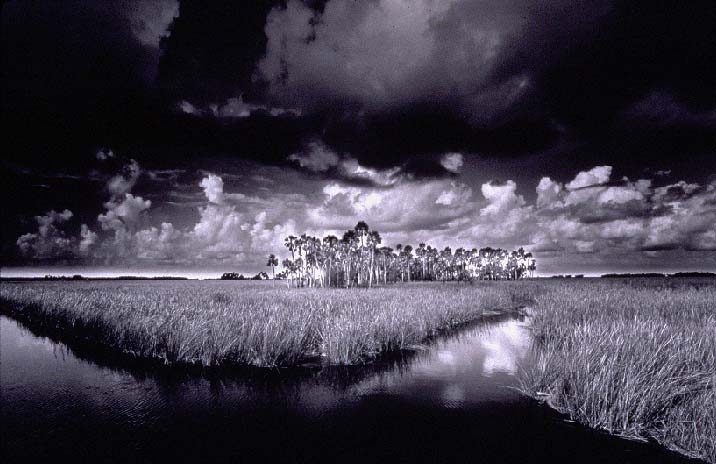
This 1991 photo of Seven Cabbage Cut, Chassahowitzka, Florida by Clyde Butcher is part of the "Visions of America" exhibit opening tomorrow at the G2 Gallery in Venice. Click on the image to be taken to the gallery website. While the image is of cabbage palms in the Florida Gulf Coast, this Californian is floored by Butcher's reminder of what palms do in nature, which is serve as wetland complex grasses on coasts and around desert oases. Of all the head-scratching moments that the Martians will have when trying to make sense of our landscaping, one may well involve how palms became everything from office plants to the most dangerous street "tree" in the world. More than 30 of Butcher's silver gelatin photographs of US national parks will be on show through February 19th. Butcher will be lecturing at the gallery on January 21st. Proceeds of print sales will go to the World Wildlife Fund.
Tags: chance of rain > Clyde Butcher > Emily Green > G2 Gallery

